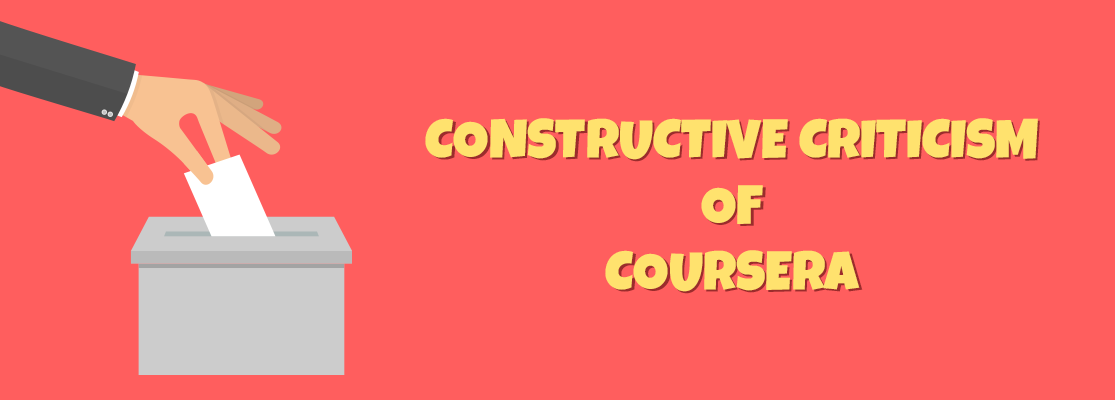CONSTRUCTIVE CRITICISM OF COURSERA
Well it’s taken me over 3 and a half years, but I’ve finally completed another mooc.
I use the term completed loosely, because while I consumed all the content, I didn’t submit any of the assignments. In other words, I completed the course as far as my personal learning needs are concerned, while still feeding the naysayers’ MOOCs-are-a-failure-because-their-completion-rate-is-low argument.
The mooc in question was e-Learning Ecologies: Innovative Approaches to Teaching and Learning for the Digital Age by the University of Illinois on the Coursera platform. I found the Australian accents of the instructors a pleasant surprise, and the quality of the content top-notch.
The course revolved around 7 affordances of e-learning “ecologies”, with 2 presented each week. I have put the word ecologies in inverted commas because I would have used the term “pedagogies” instead. Nonetheless, while most e-learning professionals would be familiar with (or at least aware of) each of the affordances, I found it worthwhile to review them in turn, which also provoked deep tangential thinking.
Speaking of tangents, one of the instructors supplemented his presentations with interesting vignettes about his educational heroes from history, which I found both informative and engaging.Despite my overall satisfaction with this course, however, I experienced yet again a couple of perennial bugbears. Accordingly I offer the following points of constructive criticism to Coursera.
1. LACK OF INSTRUCTOR INTERACTION
I am sensitive to the “massive” in mooc, and appreciate the fact that the instructors can’t possibly respond to every contribution in the social forum.
However, I found their total lack of participation really quite odd, especially in the early days when I seemed to be the only one posting anything.
Given the subject matter of this course, it’s also ironic!
2. OBSCURE PRICING
It may be widely known among enthusiasts that moocs are free, but this fact is not widely known among the general population.
I’ve lost count of the number of times my colleagues have contacted me to double- and triple-check that the Coursera courses which I have curated for them are indeed free. Either the price (i.e. $0 or “FREE”) is not mentioned, or the effectively meaningless “Audit” is used in its place.
Coursera’s push towards paid courses – which, by the way, are not moocs – only serves to muddy the waters.
I don’t know if it’s due to Coursera’s genesis in Higher Education or for some other reason, but it’s evident they do not understand their prospective customers in the corporate sector.
Written by our Guest Blogger, Ryan Tracey
Ryan Tracey is a learning experience designer based in Australia. He is a council member for the Australian Institute of Training & Development, and a former editorial board member for eLearn Magazine.
Ryan has worked in corporate e-learning for over 15 years. He holds a Master’s degree in Learning Sciences and Technology from the University of Sydney.
_________________________________
Copyright of posts written by our Guest Bloggers are their own.
Published on 15-Feb-2017






